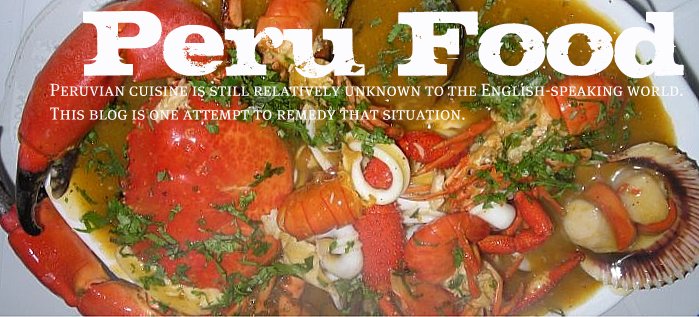Remember, as Mi Causa restaurant with its 38 different types of causa teaches us, with causa the only limits are your imagination.
My personal tips for making a superb causa:
The key element is the quality of the potatoes. Where I live, organic Yukon Gold are the tastiest I've found. In Peru, causa is usually made with the grande dame of flavorful Peruvian potatoes, papa amarilla. So wherever you are, make sure you invest in the best tasting potatoes you can find.
This recipe is from Epicurious for a causa with a a chicken filling. If you don't have access to ajà you can substitute any hot pepper you have in your area, but bear in mind that causa is not meant to be very spicy, it should have just a hint of spicy heat. Use very light oil. I like the comments on this page.
causa at Epicurious
This next recipe is from Recipe Source for a causa with many different types of ingredients. It would make quite a spectacular showcase causa but you don't have to use the fried fish or even the yuca root if you don't want to. You can always substitute tuna, avocado, or boiled diced shrimp. If you do use yuca, make sure you devein it, taking out the fibrous center strip. Give the kalamata olives a very quick rinse to get off some of the briny flavor. In Peru, those olives are called aceitunas de botija.
causa at Recipe Source
The following is a down-and-dirty, very easy causa recipe from Food Down Under.
The only part in which I disagree is that you use 'leftover' mashed potatoes.
No.
That's simply wrong.
You must use freshly-made mashed potatoes for the best causa taste experience. Nonetheless, this is a good, easy-to-follow recipe:
causa at Food Down Under
Finally, this recipe from Yanuq is for a causa stuffed with tuna. They offer some good ideas for alternative stuffings, and good photos of the technique, although it really is more of a causa roll than a traditional causa. Nonetheless, here is the link:
causa from Yanuq
As you can see, causa is a very versatile dish. However you decide to make it, I am certain you will enjoy it.
click here to read more about causa and its origins
click here to find out where you can try 38 different types of causa
Happy causa!
Peru.Food@gmail.com
.
.
.
Click here for the Peru Food main page.
TAGS: Peru, Peruvian, food, cooking, cuisine, cocina, comida, gastronomía, peruana
TAGS: Peru, Peruvian, food, cooking, cuisine, cocina, comida, gastronomía, peruana

5 comments:
The mashed potatoes part is wrong...well at least to some degree. To most americans mashed potatoes contains cream and butter. In this case, for causa, the potatoes need to be boiled and mashed to form a masa. That's as far you will come to mashed potatoes.
happy coocking
luis
Luis, you're right of course. To make causa, you boil the potatoes, and then mash them up with lemon juice and ajà amarillo. If you have a 'prensapapas' or ricer, that's better than mashing.
Causa doesn't take cream or butter. But it still is a type of mashed potato dish.
Gato
.
.
.
I was impressed with how the Causa I made using your recipe turned out. I brought it to my Spanish class on the last day for the fiesta we had. It was a hit!!!! A few people in the class wanted the recipe even because they said it was really good. The only problem I did have was the rolling up the potatoes,it was not as easy as I thought but the taste was wonderful. Next time I will try a different filling besides tuna maybe. Thank you very much!!!!
I just experienced Peruvian food for the first time at the divine Andina Restaurant in Portland, Oregon. Their causa were described as "traditional preparation of potato mixed with fresh key lime pressed into a cake, with savory fillings..." They were served in gorgeous layers. My question is--is the key lime juice traditional, or a novo-preparation?
In the Andean region of South America, key limes are usually used instead of what is conventionally referred to as lemons or limes in the US.
Post a Comment